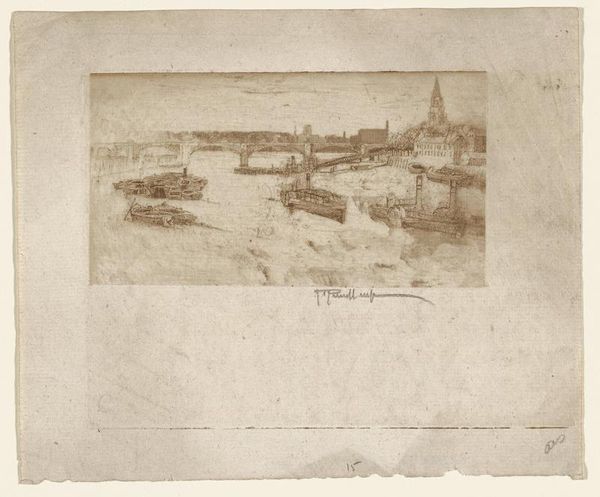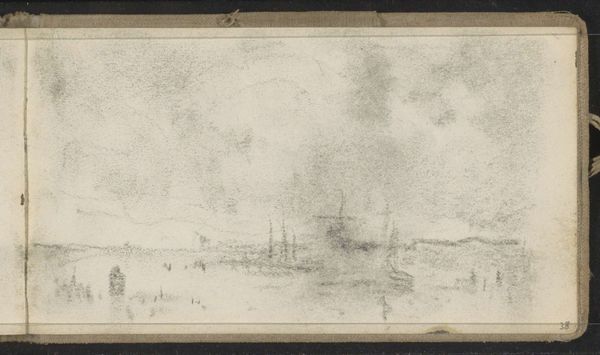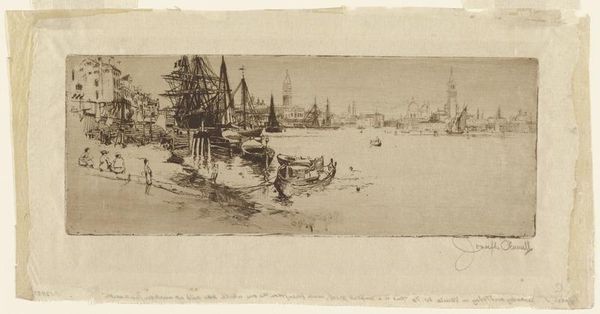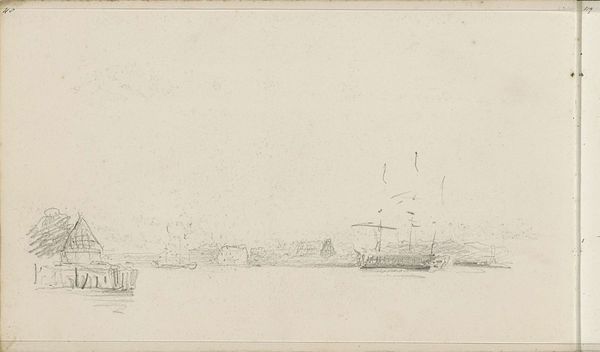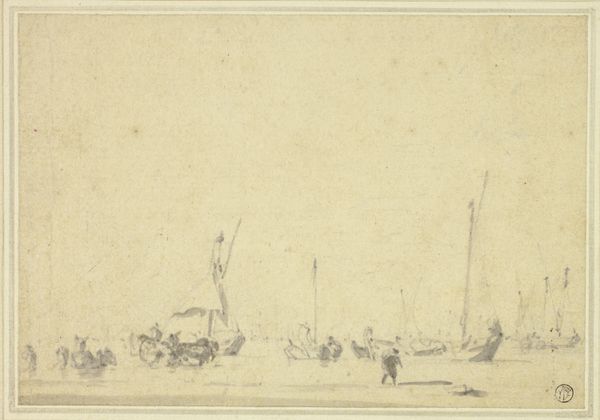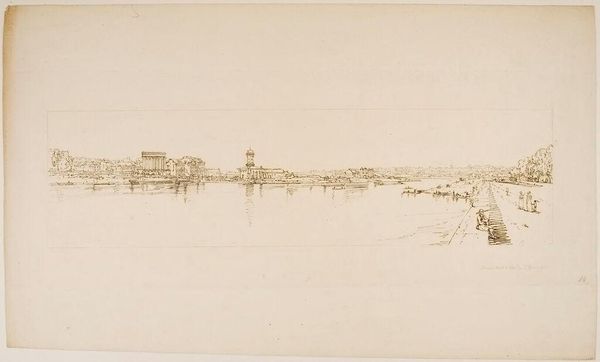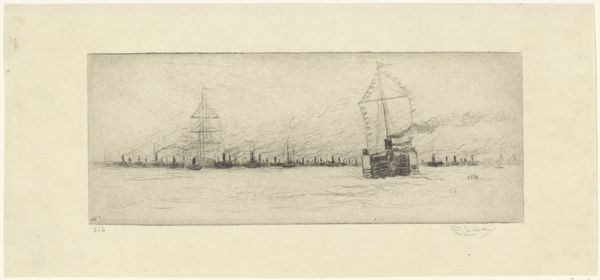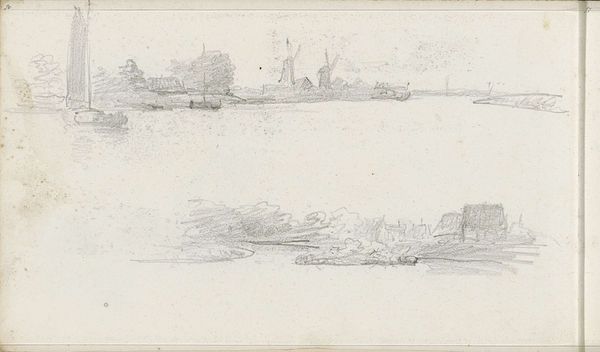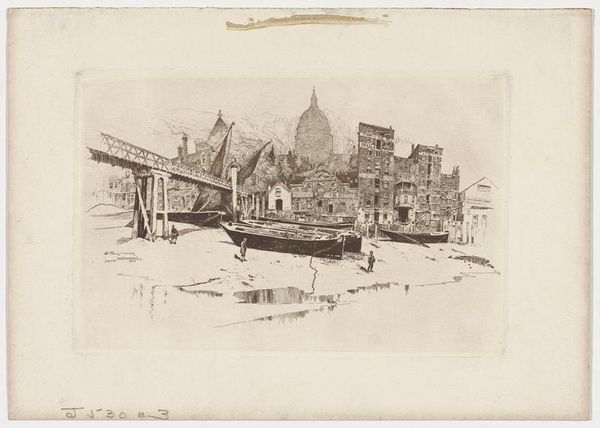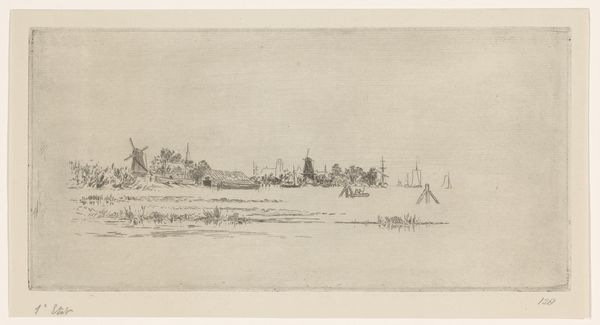
Dimensions: 7 7/8 x 10 3/16 in. (20 x 25.88 cm) (plate)8 3/4 x 12 1/4 in. (22.23 x 31.12 cm) (sheet)
Copyright: No Copyright - United States
Editor: This etching, "San Georgio," created in 1883 by Joseph Pennell, captures a Venetian waterscape. The ethereal quality almost obscures the architecture, reducing it to a ghost of a city. What stands out to you in this piece? Curator: This print fascinates me because of what it reveals about the labor and process involved in its creation. The soft, blurred lines aren't accidental; they're a product of the artist’s hand guiding the etching needle, controlling the acid's bite into the metal plate. What kind of physical effort do you imagine was involved in pulling each print, and how might that repetitive action have informed Pennell's understanding of the image itself? Editor: So, you're less focused on Venice as a subject, and more on the act of *making* Venice visible? Curator: Precisely. Consider the cost of materials - the paper, the metal plate, the inks, not to mention the etcher’s tools. Who had access to these means of production at that time? Who was this image for, and what did its accessibility signify within the burgeoning print market? The "San Georgio," is a commodity produced in an industrial fashion for cultural consumption. Editor: It's interesting to think of Impressionism, which often feels so fleeting and personal, through this lens of labor and access. I never thought about how that soft, atmospheric quality is not just aesthetic, but also deeply rooted in material practice. Curator: Exactly. Looking closely at the marks themselves brings us closer to understanding both Pennell's intention and the broader social and economic conditions that made this image possible. Editor: This has totally changed my perspective. Thank you. Curator: My pleasure.
Comments
No comments
Be the first to comment and join the conversation on the ultimate creative platform.
